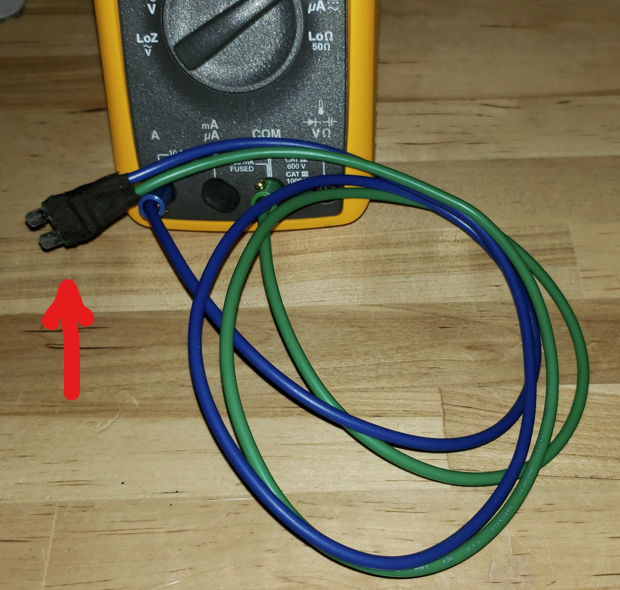Trouble shooting SL500’s rear AMG battery drain
July 27th, 2024 10:57 AM Mr. Q Categories: 2004 Mercedes SL500, Battery
For a Mercedes SL500 (R230) with an AMG battery setup, the average parasitic draw when the vehicle is not running should be relatively low. Typically, for most modern vehicles, the acceptable range for parasitic draw is between 20 to 50 milliamps (mA). However, specific values can vary slightly based on the number of electronic systems and accessories installed in the car.
The impact of a consistent current draw on a car battery can significantly affect its lifespan and performance. When a vehicle is off, various electrical components, such as alarm systems, clocks, and control modules, may still draw power from the battery, leading to what is known as a parasitic draw. Even small draws, like 0.05A (50mA), can deplete the battery over time. For example, a standard 12Ah battery might last about 10 days under a 0.05A draw, while a more robust 18Ah battery could last 15 days. However, as the current draw increases, the battery life shortens dramatically. A 0.25A draw, often caused by malfunctioning components or aftermarket accessories, could deplete a 12Ah battery in just two days. Continual draining and recharging can reduce the battery’s overall capacity, leading to premature failure. In severe cases, such as a 0.5A draw, a battery may last only a single day, potentially leaving the vehicle stranded if the issue isn’t addressed. It’s crucial to monitor and manage parasitic draws to ensure the battery remains reliable and to avoid unexpected breakdowns. Mine was over 1A, turned out to be the cellphone (that I’m not using) and Tire Pressure Monitory. Removing the fuses brought me down to 0.12A (about 6 days before issues).
Battery Life Table
| Current Draw (A) | 12Ah Battery (Hours) | 12Ah Battery (Days) | 18Ah Battery (Hours) | 18Ah Battery (Days) |
|---|---|---|---|---|
| 0.05 | 240 | 10.00 | 360 | 15.00 |
| 0.06 | 200 | 8.33 | 300 | 12.50 |
| 0.07 | 171 | 7.13 | 257 | 10.71 |
| 0.08 | 150 | 6.25 | 225 | 9.38 |
| 0.09 | 133 | 5.54 | 200 | 8.33 |
| 0.10 | 120 | 5.00 | 180 | 7.50 |
| 0.11 | 109 | 4.54 | 164 | 6.83 |
| 0.12 | 100 | 4.17 | 150 | 6.25 |
| 0.13 | 92 | 3.83 | 138 | 5.75 |
| 0.14 | 86 | 3.58 | 129 | 5.38 |
| 0.15 | 80 | 3.33 | 120 | 5.00 |
| 0.16 | 75 | 3.13 | 113 | 4.71 |
| 0.20 | 60 | 2.50 | 90 | 3.75 |
| 0.30 | 40 | 1.67 | 60 | 2.50 |
| 0.40 | 30 | 1.25 | 45 | 1.88 |
| 0.50 | 24 | 1.00 | 36 | 1.50 |
Measuring the Parasitic Draw
- Prepare the Vehicle:
- Ensure that the vehicle is in a fully off state. Close all doors (push in the pins), remove the key from the ignition, and wait for any timed electronics (like lights and infotainment systems, has gone to sleep after ~15 minutes) to shut down.
- Disconnect the Battery:
- Disconnect the negative terminal of the rear AMG battery.
- Set Up the Multimeter:
- Set your multimeter to measure current (amperes). Most multimeters have a specific port and setting for measuring current.
- Connect the Multimeter:
- Place the multimeter in series between the negative battery terminal and the battery cable. One lead of the multimeter should be connected to the battery post, and the other lead to the disconnected battery cable.
- Read the Measurement:
- Observe the current reading on the multimeter. It may take a few moments for the reading to stabilize. The reading should typically be within the range of 20 to 50 milliamps (0.020 to 0.050 amps).
Factors Affecting Parasitic Draw
- Electronic Modules:
- Modern vehicles have numerous electronic control modules that may draw a small amount of current even when the vehicle is off.
- Aftermarket Accessories:
- Any aftermarket electronics, such as alarm systems, stereos, or GPS trackers, can increase the parasitic draw.
- Battery Health:
- An old or failing battery might not hold a charge well, making it seem like there’s a higher draw when the issue is actually the battery itself.
- Faulty Components:
- A malfunctioning component or a short circuit somewhere in the electrical system can cause an unusually high parasitic draw.
Troubleshooting Excessive Parasitic Draw
If you find that the parasitic draw is significantly higher than the acceptable range (e.g., above 50 mA), you can troubleshoot by:
- Pulling Fuses:
- Pull fuses one at a time while observing the multimeter reading. When the reading drops significantly, the circuit associated with that fuse is likely causing the excessive draw.
- I ended up creating a fues replacement, enabling me to view the current draw per fuse. Unfortuanly, it requires the car going back to sleep everytime. Very time consuming.

- Inspecting Wiring and Components:
- Check the wiring and components associated with the suspect circuit for any signs of damage, wear, or malfunction.
- Consulting a Professional:
- If you’re unable to pinpoint the cause of the excessive draw, it may be best to seek help from a professional mechanic or an auto electrician.
Ensure the battery voltage does not drop
During storage (ie: not driving for a few days) my battery drains well below the 12.6v. I use a charge on both batteries. 20-Amp Car Battery Charger, 12V and 24V Smart Fully Automatic LiFePO4 Battery Charger Maintainer Trickle Charger wTEMP Compensation. I use the 20A because a trickle chared does not seem to maintian the battery.

By following these steps, you too should be able to determine if the parasitic draw on your Mercedes SL500’s rear AMG battery is within the normal range and take appropriate action if it is not.
Reference
My knowledge with some/miniamal electrial experience (don’t trust me)